Safe ways to withdraw USB
Many people have a habit of copying data from USB to the computer and then unplugging USB without disconnecting. This can result in data loss or damage, and speed up USB failure. Please refer to the following ways to turn off USB to protect your data and USB.
1. Use the utility on Windows
Just click the up arrow at the corner of the taskbar outside the Desktop and select Safe Remove Harware and Eject Media
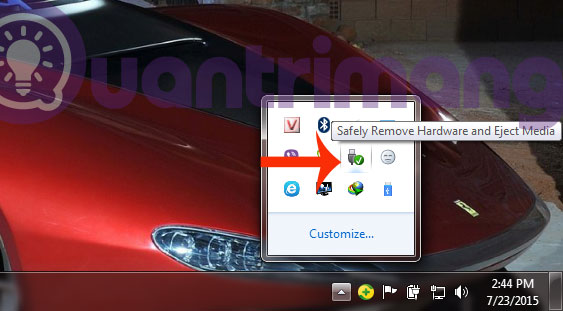
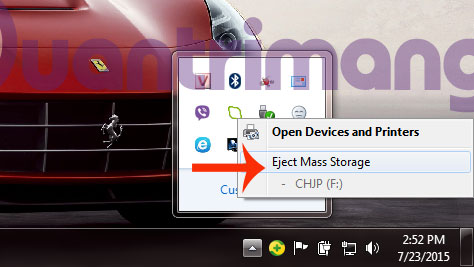

2. Close the relevant programs and folders
If you want to remove a USB device from a Windows device, you need to make sure the files and programs on it are closed. If you open the document and run the program and still proceed to withdraw the USB, everything will be in danger of being lost or damaged. Open Task Manager and see if any program is suspended
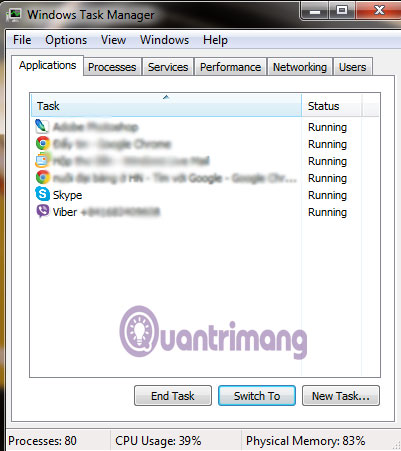
3. Use external software
You can use external software like USB Safely Remove, with the same method as above
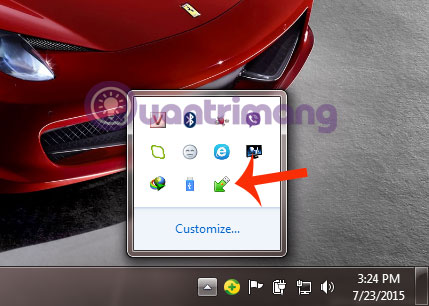

4. Log off Windows account
If you do not want to use the above methods, you can use the faster way of Log off the Windows account ( Windows + L shortcut ), then unplug the USB from the computer and Log on back.
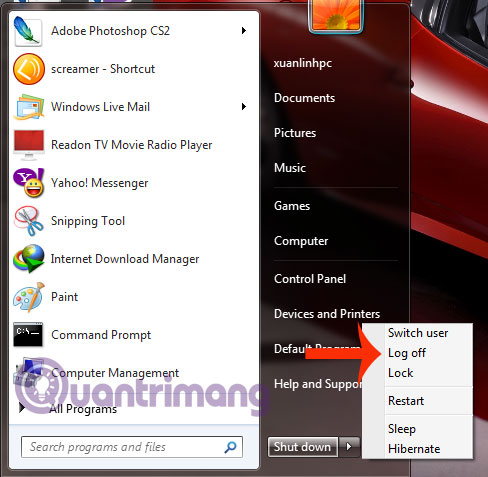
5. Turn off the computer
The last, simplest, but time-consuming way is to turn off your computer using the Shutdown button. You wait for the computer to turn off, then unplug the USB and reopen the computer to continue working.
The above are ways to safely remove the USB from the computer to protect the data in the computer as well as the life of the USB.
Having fun!
You should read it
- How to turn on Safe Mode on Android
- How will Safely Remove harm the device?
- The procedure to open Microsoft Office 2013/2016 in Safe Mode
- How to boot into Safe Mode on Mac
- Enable Safe Mode in Windows 7
- Start Safe Mode on Windows XP
- How to access Safe Mode Windows 10 on startup
- What is Safe Zone on Instagram?
May be interested
- 11 ways to keep IoT devices safe
 hackers are increasingly targeting iot devices to steal data, install malware, or use them in botnets. so, following iot device security best practices has become more important than ever.
hackers are increasingly targeting iot devices to steal data, install malware, or use them in botnets. so, following iot device security best practices has become more important than ever. - Unique tricks to steal money from ATMs
 the vault in the middle of the street always elicits greed of bad guys and makes them find countless ways to withdraw, from using modern equipment, music players to bulldozers to picking up atms.
the vault in the middle of the street always elicits greed of bad guys and makes them find countless ways to withdraw, from using modern equipment, music players to bulldozers to picking up atms. - The procedure to open Microsoft Office 2013/2016 in Safe Mode
 like safe mode on windows operating system, safe mode in office also supports users to fix problems and problems when starting the application.
like safe mode on windows operating system, safe mode in office also supports users to fix problems and problems when starting the application. - 6 ways to ensure Chrome extensions are safe
 choosing chrome extensions carefully is important, so here are the best ways to make sure your chrome extensions are safe.
choosing chrome extensions carefully is important, so here are the best ways to make sure your chrome extensions are safe. - How to boot into Safe Mode on Mac
 if your mac is having difficulty starting or you are experiencing startup problems, you should start your mac in safe mode to try to identify and resolve the problem. we'll show you how to do it.
if your mac is having difficulty starting or you are experiencing startup problems, you should start your mac in safe mode to try to identify and resolve the problem. we'll show you how to do it. - Start Safe Mode on Windows XP
 with safe mode, your computer does not have to boot to work with windows as usual, but only loads the most basic files, the most essential drivers (by default windows) like the screen driver, desk. keys, mouse, storage device. of course, you will not be able to use the cd-rom, the printer, or you may not be able to connect to the network ... after you boot into safe mode, you may be able to resolve the problem from here. below, we will show you how to start safe mode on your system
with safe mode, your computer does not have to boot to work with windows as usual, but only loads the most basic files, the most essential drivers (by default windows) like the screen driver, desk. keys, mouse, storage device. of course, you will not be able to use the cd-rom, the printer, or you may not be able to connect to the network ... after you boot into safe mode, you may be able to resolve the problem from here. below, we will show you how to start safe mode on your system - Withdraw money at Techcombank ATM without card
 techcombank now allows users to withdraw cash at atm without using a card. in a few quick steps, the account holder just needs to select the withdrawal or transfer order by phone.
techcombank now allows users to withdraw cash at atm without using a card. in a few quick steps, the account holder just needs to select the withdrawal or transfer order by phone. - What is Safe Zone on Instagram?
 if you've ever tried viewing an instagram reel or story but couldn't understand its full meaning because some related content was hidden behind text or buttons, you're not the only one.
if you've ever tried viewing an instagram reel or story but couldn't understand its full meaning because some related content was hidden behind text or buttons, you're not the only one. - Ways technology can keep you safe and healthy on the go
 are you going to have a long trip soon? do you have a specific plan yet? whether you have them or not, the tips and apps below will help you stay healthy and safe on the go.
are you going to have a long trip soon? do you have a specific plan yet? whether you have them or not, the tips and apps below will help you stay healthy and safe on the go. - How to Exit Safe Mode
 this article shows you how to restart your computer, tablet or smartphone normally after opening it in safe mode. in safe mode, your computer, tablet or phone loads only the programs and information needed to run some basic operations, which are helpful in diagnosing problems or removing malicious code. you should only exit safe mode when you are sure that the problem that caused you to use safe mode has been fixed.
this article shows you how to restart your computer, tablet or smartphone normally after opening it in safe mode. in safe mode, your computer, tablet or phone loads only the programs and information needed to run some basic operations, which are helpful in diagnosing problems or removing malicious code. you should only exit safe mode when you are sure that the problem that caused you to use safe mode has been fixed.










 Fix Windows error without image, Thumbnail thumbnail
Fix Windows error without image, Thumbnail thumbnail Completely uninstall software in Windows with Revo Uninstaller
Completely uninstall software in Windows with Revo Uninstaller 4 steps to fix error 0x8004FC12 when activating Microsoft Office on Windows 10
4 steps to fix error 0x8004FC12 when activating Microsoft Office on Windows 10 Fix A disk read error occurred on Windows
Fix A disk read error occurred on Windows Instructions to fix Task Manager has been Disabled by your Administrator
Instructions to fix Task Manager has been Disabled by your Administrator 5 steps to fix 'Stop 0x0000007B' error on Windows XP
5 steps to fix 'Stop 0x0000007B' error on Windows XP